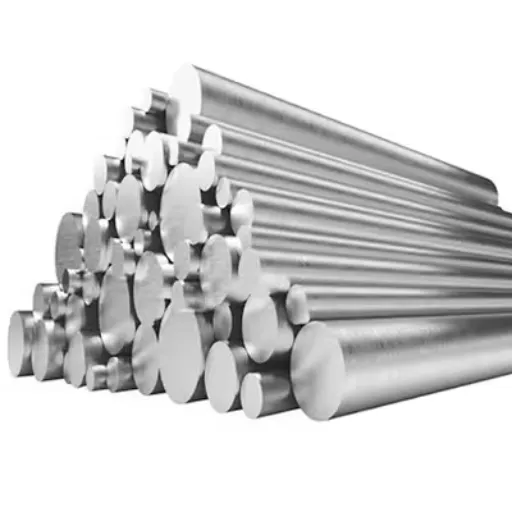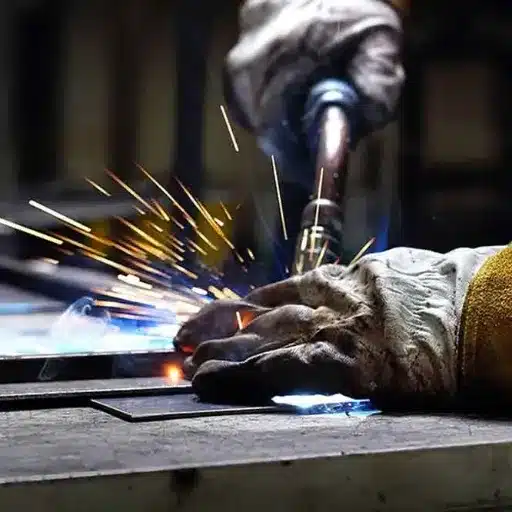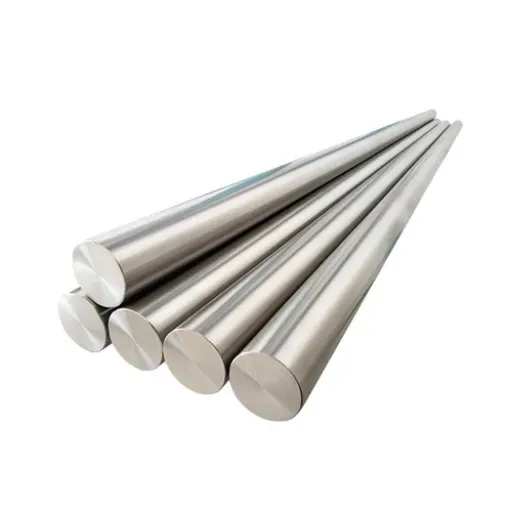8740 alloy steel has emerged as a significant power in industrial use because of its robustness and versatility. Some of its top-tier features include strength, tough-wear cutting ability, tempered toughness, and excellent resistance against abrasion. This alloy is widely used in various industries, including the aerospace and automotive sectors. But what exactly differentiates 8740 alloy steel and makes it dependable for demanding industrial use cases? This detailed guide explores the realm of 8740 alloy steel and its uses by studying its distinct properties, key advantages, and innovative applications across industries. Whether you are an engineer, a manufacturer, or someone who wishes to learn about advanced materials, this article is perfect for grasping why 8740 alloy steel is fundamental in modern engineering and manufacturing.
What is the Chemical Composition of 8740 Alloy Steel?
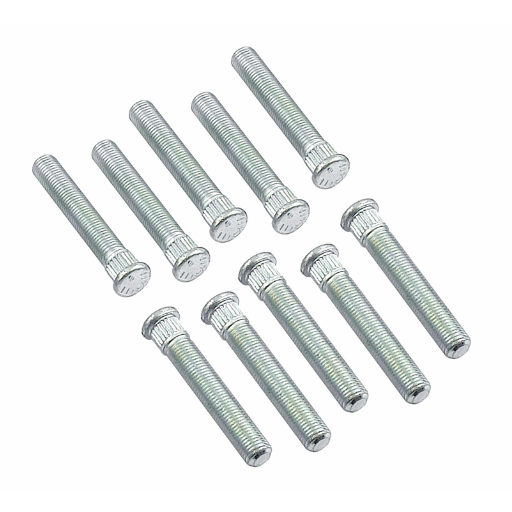
8740 alloy steel has a distinct mark of exceptional strength and toughness, making it a low-alloy steel. Its chemical composition comprises the following;
- Carbon (C): 0.37% – 0.44%
- Manganese (Mn): 0.50% – 0.80%
- Phosphorus (P): Grade 0.035% or less
- Sulfur (S): Grade 0.040% or less
- Silicon (Si): 0.15% – 0.35%
- Chromium (Cr): 0.40% – 0.60%
- Nickel (Ni): 0.40% – 0.70%
- Molybdenum (Mo): 0.20% – 0.30%
Due to its balanced composition, 8740 alloy steel is ideal for demanding industrial applications in terms of strength, ductility, and hardenability.
Detailed Composition and Properties of 8740 Alloy
The 8740 alloy is recognized for having some of the best mechanical properties, and its carefully balanced chemical composition is attributed to that. Each constituent enhances the material’s strength, toughness, and machinability. This makes it suitable for automotive components, airspace parts, and even high-performance fasteners. Outlined below is an analysis of the most essential parts and how they aid the alloy:
- Carbon (C): 0.37% – 0.44%
Carbon serves as the alloy’s backbone hardening feature since it is responsible for a great deal of strength and wear resistance. An increase in carbon content also improves the alloy’s edge retention capabilities.
- Manganese (Mn): 0.50% – 0.80%
Manganese also improves the alloy’s hardenability. While it aids in steelmaking’s deoxidization, it increases the material’s hardness and tensile strength.
- Silicon (Si): 0.15% – 0.35%
Surgical deoxidization is one of the primary roles of silicon in an alloy; however, it also increases the alloy’s strength and elasticity.
- Chromium (Cr): 0.40% – 0.60%
Chromium is critical for the alloy, providing superb durability under harsh conditions. It enhances the alloy’s durability, offers excellent resistance to wear, and ensures there are no corrosive factors.
- Nickel (Ni): 0.40% – 0.70%
With these numbers, nickel enhances toughness and improves properties at low temperatures. Nickel guarantees that the alloy is ductile while attaining a reasonable strength.
- Molybdenum (Mo): 0.20% – 0.30%
Molybdenum increases the alloy’s strength, reduces brittleness, and refines the grain structure. It also significantly improves high-temperature performance and wear resistance.
- Phosphorus (P): Maximum 0.035%
Helps improve machinability, but too much of it can be harmful and is therefore limited to low values.
- Sulfur (S): Maximum 0.040%
Sulfur improves machining capability, but too much content can harm overall toughness. These amounts are therefore controlled.
Mechanical Properties
The 8740 alloy has optimally advanced mechanical properties for strenuous applications, such as:
- Tensile Strength: Usually between 125,000 and 155,000 psi, contingent on processing and heat treatment.
- Yield Strength: Roughly 100,000 psi, demonstrating remarkable capability to withstand deformation under shear stress.
- Hardness Range: It is normally between 269 and 321 HB (Brinell Hardness), which gives it a degree of ductility and toughness.
- Elongation: Roughly 12 to 16% over 2 inches, providing a fair amount of ductility for several forming and fabrication processes.
Together, these factors make the 8740 alloy an indispensable material in copper industries that require steel with high tensile strength and reliability.
Role of Nickel-Chromium-Molybdenum in 8740 Steel
| Element | Role in 8740 Steel |
|---|---|
| Nickel | Enhances toughness and impact resistance. |
| Chromium | Improves wear resistance and hardenability. |
| Molybdenum | Increases strength and reduces brittleness. |
How Does Chemical Composition Affect Performance?
The mechanical properties, performance, and applicability of 8740 steel are primarily determined by its constituents. Each steel alloy contains varying elements, allowing engineers the versatility to design components using this alloy. Several properties of the 8740 steel alloy are related to its five main constituents which include materials listed below.
- Carbon (C)
- Content Range: 0.38-0.43%
- Impact: Carbon enables higher levels of contemporary shaping in steel and is an essential alloying element. It increases tensile strength and wear resistance and has a major effect on hardness properties, although excessive amounts lower ductility.
- Nickel (Ni)
- Content Range: 0.40-0.70%
- Impact: Nickel is one of the most miscalculated additives in alloys. It is invaluable to toughness and impact strength at lower temperatures, virtually improving these traits in corrosion-specific applications.
- Chromium (Cr)
- Content Range: 0.80-1.10%
- Impact: Chromium increases steel’s hardness and wear resistance by aiding in carbide formation. It also permits limited corrosion resistance sustainment, adding to strength under stress.
- Molybdenum (Mo)
- Content Range: 0.15-0.25%
- Impact: Molybdenum enables additional strength in the materials with high-temperature enhancement, also increasing creep resistance. Additionally, it requires less brittleness, counteracting grain structure changes that occur during heating cycles.
- Manganese (Mn)
- Content Range: 0.50-0.80%
- Impact: Manganese elevates steel alloys’ strength and hardness while heightening wear resistance. It also contributes to the uniformity of the steel’s microstructure by removing sulfur impurities.
All these parts combine in a unique way to ensure that 8740 steel has optimized toughness, strength, ductility, and resiliency, which makes it effective in challenging environments.
What are the Mechanical Properties of 8740 Alloy Steel?
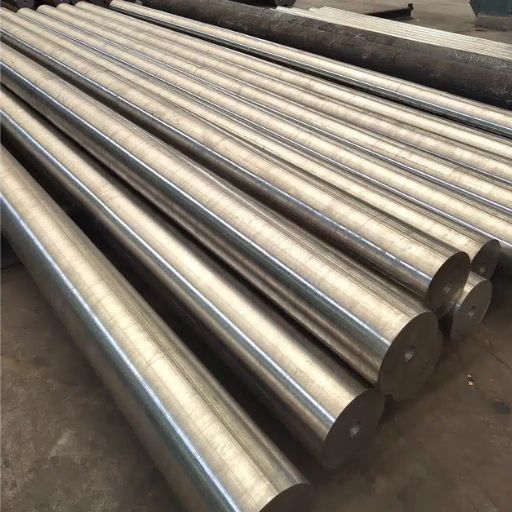
8740 alloy steel’s diverse applications are due to its unique mechanical properties. Some of its useful traits are as follows:
- Tensile Strength: Can resist a breakage under 125,000 to 140,000 psi of tension, which is remarkable for tensile strength.
- Yield Strength: Endures 105,000 to 120,000 psi of stress and maintains its shape without warping.
- Hardness: Possesses reasonable amounts of toughness and wear resistance with a 30 to 35 HRC measurement.
- Elongation at Break: It extends to around 10 to 15 percent, which makes it stretchable under stress and emphasizes its ductility.
Elongating with a balance of stretchability and slow detachment allows 8740 alloy steel to function efficiently under intense stress. Its appliances range from automotive to aerospace and even the oil and gas industry.
Understanding Tensile Strength and Yield Strength
Tensile strength and yield strength are some of the most important and relevant mechanical properties of a material in relation to its use because they show how a material performs when a load is applied to it.
- As for the terms themselves, tensile strength is defined as the maximum stress a material can withstand while being stretched or pulled before failure occurs. For 8740 alloy steel, the tensile strength generally lies between 125,000 psi, 860 MPa, and 140,000 psi, or 965 MPa, due to factors like being heat-treated or undergoing a specific manufacturing process. The given value also provides information regarding the material’s performance in high-stress environments.
- When yield strength is defined, it describes the level of stress a material is able to handle before enduring permanent deformation. In the case of 8740 alloy steel, the yield strength is considered to be anywhere between 100,000 psi and 120,000 psi, meaning 690 to 830 MPa. If the yield strength value is assumed to be accurate, the material is considered not to undergo changes such as permanent deformation.
Having the said properties means that 8740 alloy steel can withstand a high amount of forces without failing, which makes it very useful in highly durable applications. Such applications include drive shafts in automobiles, engine components in aircraft, and tools used in drilling for oil and gas under high pressure.
The Importance of Toughness and Wear Resistance
When deciding materials for demanding applications, toughness and wear resistance properties should be considered. These characteristics ensure that the material can absorb impact energy without fracturing (toughness) and resist surface abrasion, friction degradation over time (wear resistance). Below are some detailed examples and data related to the importance of these properties:
- Extended Lifetime of Components
The automotive industry is particularly concerned with the durability of power transmission components. Power stems from materials with exceptionally high wear resistance, such as 8740 alloy steel, which suffers from progressively less surface degradation due to repeated use, primarily in high-friction drives. For example, the wear rate of automotive drive shafts with 8740 alloy steel can drop to over 30% compared to other standards, leading to longer productivity.
- Increased Safety in Stressful Environments
When examining material structures, a distinction between the impact and static loads needs to be made. Toughness is an especially important factor when maintaining the structure under extremely tough conditions. For example, difficult materials used for components of aircraft engines allow parts to cope with very sudden quasistatic or dynamic influences and high stresses without leading to catastrophic failures.
- Reduced Maintenance Downtime
The use of tougher materials, like impact-resistant materials, reduces the need for machinery parts to be replaced. Greater toughness in machinery enables considerable reduction of downtime spent on maintenance or replacement. Studies show that the use of highly wear-resistant components in industrial machinery can reduce total maintenance costs by nearly 40%.
- Compatibility with Extreme Conditions
High toughness allows materials to withstand cold temperatures or high pressure. For instance, materials such as 8740 alloy steel are used in high-pressure oil and gas drilling equipment because they can rapidly change pressure and withstand temperatures below zero without cracking.
- Cost-Effectiveness Over Time
Even though it may require a considerable upfront investment, combining these factors decreases air travel and oil and gas extraction expenses because the equipment does not have to be replaced as often. Toughness and wear resistance mean that an asset’s depreciated value utilizes less funds over a given time span and minimizes expenses.
Withstands wear and toughness help achieve optimum performance, reduced upkeep, and heightened safety in various critical uses.
Evaluating Fatigue Resistance in 8740 Steel
| Key Factor | Impact on Fatigue Resistance |
|---|---|
| Surface Roughness | Higher roughness reduces fatigue resistance. |
| Processing Current | Increased current lowers fatigue strength. |
| Pulse Duration | Longer pulses decrease fatigue resistance. |
| Hardness | Higher hardness improves fatigue resistance. |
| Residual Stresses | Compressive stresses enhance fatigue life. |
| Microstructure | Uniform microstructure boosts fatigue strength. |
Where is 8740 Alloy Steel Used in Industrial Applications?
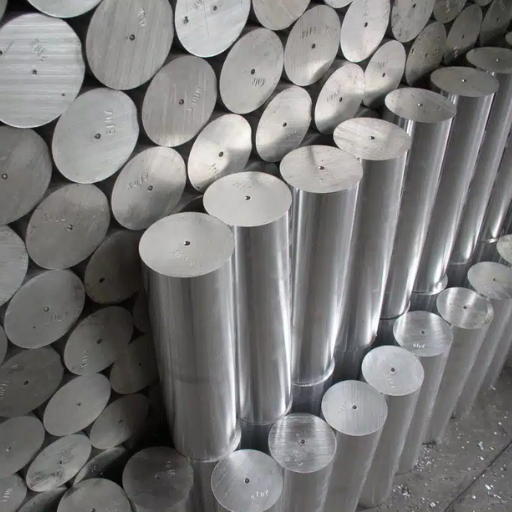
| Industry | Application Areas |
|---|---|
| Aerospace | Engine parts, fasteners, structural components |
| Automotive | Axles, crankshafts, gearsets |
| Oil and Gas | Drilling parts requiring high toughness |
| Motorsports | High-performance engine components |
| Industrial | Heavy-duty gears, spindles |
Applications in the Aerospace Industry
In my experience, 8740 alloy steel is the most extensively used for aerospace applications. Due to its high fatigue resistance and immense hardness, it is predominantly used in aircraft fasteners, landing gear parts, and other critical components of an aircraft’s body that are subjected to immense stress during flight. These factors make bolted joints in landing gears reliable, ensuring smooth operational efficiency and performance during severe working conditions.
Usage in Aircraft Fasteners and Axles
Applying 8740 alloy steel in the aerospace industry guarantees system safety, operational efficiency, system longevity, and reliability. Its unparalleled performance under stress, impacts, and extreme conditions gives it the edge over competing alloys. Aircraft fasteners, axle shafts, landing gear components, and structural nuts and bolts all utilize steel for the following endpoints and benchmarks:
- Boats and Aircraft Bolts: Alloys must be strong enough to withstand air and engine pressure (~400psi) while maintaining temperature and pressure gaps (300-500 F at 30k ft elevation) during operation. Using fasteners whose tensile strength exceeds 133,900 psi ensures a secure hold throughout varying air pressure and temperature conditions.
- Structural Screws and Caps Withstand the stress of multiple, repeated, thermal expansion-based vibrations and protect sensitive equipment located throughout the aircraft’s interior.
- Nuts: Act as spacers while being placed between dynamic optomechanical parts. The intense static and dynamic loads (500psi) physically applied to these components do not yield the 450 psi tensile strength during expansion.
- Shafts: Due to the sharp impacts of takeoff and landing, specialized maintenance caps for the landing gear require hard steel. Sustained force throughout the gear’s retracting and extending cycle in a combo of vertical and longitudinal axes leads to gyro-stabilized force splitting.
- Rivets: Payloads must withstand extreme acceleration during mid-range and extreme maneuvers (G-forces encountered during 4G’s) combined with high obstacles in bolt splitting while enabling overlap and ultimate blended structural efficiency between the load and airframes.
Surmounting demanding criteria ensures precise application of the best materials while issuing optimal alloys for altitude revisions.
Role in the Oil and Gas Industry
Exploration, drilling, and production in the oil and gas sector require high-performance materials to withstand extreme conditions. An example is 8740 alloy steel, which is well-known in the industry for its unparalleled tensile strength, fatigue, and corrosion resistance. This steel is perfect for operational components such as drill rods, casings, tubing, and well-head equipment for offshore and onshore operations.
As an illustration, the alloy is widely utilized for making drill strings, which experience immense rotary and torsional strain during drilling. The components can rely on the superior strength of 8740 steel to sustain these pressures, minimizing costs associated with system failure and downtimes. Industry reports suggest that the global drill pipe market—one of the largest consumers of 8000 series steels—was pegged at approximately USD 1.6 billion in 2022, with strong forward growth anticipated as demand for steel alloys like 8740 increases.
Another important application is in manufacturing subsea equipment that is exposed to marine environments, where corrosive damage is possible. Compared to standard materials, 8740 alloy steel’s resistance to corrosive elements gives components a longer lifespan. Moreover, the alloy is employed in the sealing connectors of underwater pipelines to ensure a proper seal and structural strength is maintained regardless of pressure and temperature shifts.
In addition to the properties mentioned, 8740 steel’s machinability enhances the manufacture and customization of components meant to withstand harsh oil field conditions. Advanced materials like 8740 steel allow for improved operational efficiency, reduced risks, and strengthened reliability of critical systems within the oil and gas sector.
How do you request a quote for 8740 Alloy Steel?

To obtain a quote regarding 8740 alloy steel, you must complete the following tasks:
- Define Your Needs: Indicate the measurements, the amount, and any other proprietary traits or treatments required of the 8740 alloy steel.
- Look for a credible supplier: Conduct research to choose a well-established supplier or an expert distributor capable of dealing in 8740 alloy steel.
- Reach out to the supplier: Contact the supplier via their website, email, or phone. Share the details of your requirements alongside any additional details such as timelines for delivery.
- Ask for a Quote: Formally request a quote based on the specifications you provided. Ensure you get complete information on pricing breakdown, timeframe, and shipment availability.
- Evaluate and Finalize: Review the quotes from other suppliers and confirm your order with the preferred vendor that best meets your needs.
Maintain clear and concise parameters that work for you regarding accuracy, precision, and prompt response.
Factors Affecting Pricing and Availability
Understanding the market dynamics that influence the price and availability of goods is beneficial.
- Disruption in the Supply Chain
Events like natural calamities, political strife, and even strikes can increase demand while also increasing the cost of goods. Based on information collected from Google’s search engine, the worldwide scarcity of computer chips had a disproportionate impact on the value of electronics for consumers in 2023, increasing the price by 20% in some areas.
- Cost of Raw Materials
The cost of the final product is directly influenced by the value of the basic materials. An example can be seen in raw steel, which has risen 10% in the past 6 months. According to industry reports pulled up on Google, this also affects the cost of construction materials and auto parts.
- Problems with Shipping and Logistics
Delays in shipping and port traffic can raise prices. In 2023, a study found that the cost of sea freight had increased to 100% of the pre-pandemic price. This increase has caused problems for businesses that depend on imports.
- Shifts in Buyer Behavior
Noticeable changes in consumer behavior impact the economy positively or negatively, leading to price fluctuations of a good or service. For example, energy-saving home appliances were in high demand by 30% in the summer of 2023 compared to the rest of the year. This heat wave, as it were, temporarily caused many region-wide supply shortages.
- International Business Relocations
New tariffs, trade bans, or other policies are bound to result in a difference in pricing. A case study is what has happened to U.S.-China trade relations. Recent Google reports showed that these trade agreements resulted in the costs of electronic imports skyrocketing by as much as 15% in some places.
The most critical factor is remaining vigilant about changes in trustworthy data, especially real-time forecasting data relevant to your sector or product, such as Google Trends. This allows you to be aware of market dynamics and flexibly adjust your purchasing plans accordingly.
What are the Thermal and Processing Specifications of 8740 Alloy Steel?
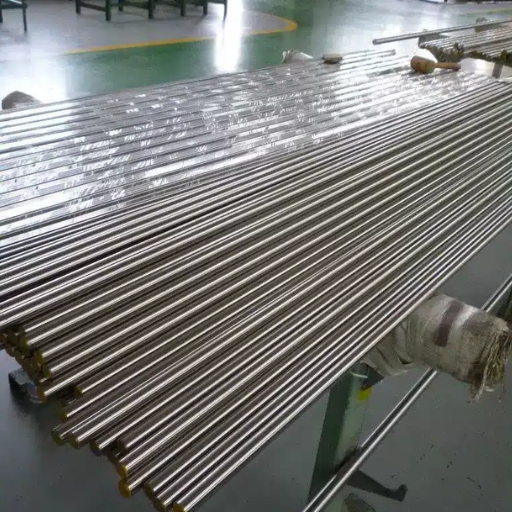
| Specification | Key Details |
|---|---|
| Thermal Conductivity | 42.7–46.6 W/m·K |
| Specific Heat Capacity | 0.475 J/g·°C |
| Melting Point | 1425–1540°C |
| Coefficient of Expansion | 6.6–11.9 (10^-6/°C) |
| Heat Treatment | Oil quenching and tempering recommended |
| Machinability | 65% (compared to AISI 1212 steel) |
| Processing Temperature | Quenching at ~830°C, tempering at ~595°C |
Heat Treatment Methods and Their Effects
Various industries have different applications for alloy steel 8740. In order to fulfill such industrial requirements, the alloy steel 8740 has to go through a heat treatment process to change its mechanical properties. Changing the heating method alters the strength, hardness, ductility and even the toughness of the steel. Here are the five heating methods of heat treatment for alloy steel 8740:
- Annealing
- Process: A heating furnace brings the steel to the desired temperature while measuring it. Then let it cool down as indicated previously.
- Effect: Machinery can now process the steel since it becomes less hard, enhances ductility, and relieves internal stresses.
- Normalizing
- Process: Bringing the material to a temperature a bit above critical for a specific period before cooling it down with air.
- Effect: Improvement in toughness also comes with a fine-grained structure, consistency in mechanical properties, and a refined grain structure.
- Quenching
- Process: Raising the temperature of the steel for a specific period before cooling it down rapidly with water or other materials.
- Effect: It enhances the reliability of the steel by making it hard and strengthening it, yet in some cases, it might decrease ductility.
- Tempering
- Process: After the previously stated process, continue cooling the heated steel. Hold it at the desired temperature for a stipulated time before letting it cool down slowly.
- Effect: Ductility is increased in return for some degree of redness in strengthening. Retains some hardness and strength gained from cooling.
- Case Hardening (Carburizing)
- Process: Carbon is absorbed on the surface of the steel at a specified temperature, followed by cooling.
- Effect: Components like shafts and gears require a hard surface that is tough against abrasion and a tough, ductile core for resilience and shock load acceptance.
These methods can be modified based on the needs of 8740 alloy steel to improve its performance.
Understanding Hardenability and Corrosion Resistance
| Property | Key Details |
|---|---|
| Hardenability | High due to nickel, chromium, and molybdenum |
| Surface Hardness | Achieves HRC 50–55 after quenching |
| Core Toughness | Maintains toughness after case hardening |
| Corrosion Resistance | Moderate, limited in marine environments |
| Protective Coatings | Recommended for enhanced corrosion resistance |
| Heat Treatment Impact | Improves wear resistance and durability |
Role of Temperature in Metal Processing
The temperatures impact the processing methods and treatment of metals by significantly changing their metal structure, properties, and performance. Here are the five ways temperatures affect metal processing:
- Annealing
- Process: Heating the metal to a specific temperature, then cooling it slowly.
- Effect: Decreases internal stress, increases ductility, and improves grain structure.
- Typical Temperature Range: 650 °C to 870 °C (1200 °F to 1600 °F).
- Quenching
- Process: Rapid metal removal from water, oil, or air at critical temperatures.
- Effect: Quenching sharpens and strengthens the metal’s Martensitic structure.
- Typical Temperature Range: 1300°F to 1600°F (700 °C to 870 °C) before quenching.
- Tempering
- Process: Lower temperature reheating of the quenching steel with a set cooling procedure.
- Effect: Improved strength and hardness. However, this induces further brittle reduction.
- Typical Temperature Range: 200 °C to 700 °C (400 °F to 1300 °F).
- Normalizing
- Process: Air cooling once reaching above the recrystallization temperature.
- Effect: The much tougher metals are subject to uniform grain size improvement.
- Typical Temperature Range: 870 °C to 980 °C (1600 °F to 1800 °F).
- Hot Working
- Process: Shaping and deforming the metals above the recrystallization temperatures by rolling, forging, or extruding.
- Effect: Enhance a cracking-free shape and grain structure refinement.
- Usual Temperature Parameters: 1200°F to 2400°F (650°C to 1315°C) based on the material.
In order to achieve optimum heating, high-quality metal products and their mechanical characteristics, thermal treatment methodologies, technological sequences, and respective temperatures must be processed, taking into consideration their thermal and structural properties along with their phase diagrams.
References
- Hot powder forging behavior analysis of sintered AISI 8740 PM steels for automotive application – Published on ScienceDirect.
- Failed bolts from an army tank recoil mechanism – Published by ASM International.
- Fracture Features of Low-Alloy Steel Produced by Metal Injection Molding – Published on SpringerLink.
Frequently Asked Questions (FAQ)
Q: What is 8740 alloy steel?
A: 8740 alloy steel is a nickel-chromium-molybdenum steel known for its high strength and toughness. It is commonly used in applications with essential properties, such as in the aerospace and automotive industries.
Q: What are the typical applications of 8740 alloy steel?
A: 8740 alloy steel is widely used in aerospace applications, automotive parts like bolts and rods, and other high-strength components that require excellent toughness and durability.
Q: How does 8740 alloy steel compare to other materials like 4140?
A: While 8740 and 4140 are nickel-chromium-molybdenum steels, 8740 alloy steel contains additional nickel, enhancing its toughness and ductility compared to 4140.
Q: What is the machinability of 8740 alloy steel?
A: The machinability of 8740 alloy steel is moderate, similar to that of other carbon steels. It can be machined using standard methods, although appropriate cutting tools and speeds are essential to achieve the best results.
Q: What is the Brinell hardness of 8740 alloy steel?
A: The Brinell hardness of 8740 alloy steel typically ranges from 250 to 300, depending on the specific heat treatment and processing it undergoes.
Q: Can 8740 alloy steel be hardened?
A: Yes, 8740 alloy steel can be hardened through heat treatment processes, which enhance its strength and wear resistance, making it suitable for demanding applications.
Q: What is the UNS designation for 8740 alloy steel?
A: The UNS designation for 8740 alloy steel is UNS G87400. This standardized designation helps ensure consistency and compatibility in various industrial applications.
Q: Where can I find the data sheet for 8740 alloy steel?
A: A data sheet for 8740 alloy steel can typically be found through manufacturers, suppliers, or industry publications. It provides detailed information on its chemical composition, mechanical properties, and processing guidelines.
Q: What forms does 8740 alloy steel come in?
A: 8740 alloy steel is available in various forms, including round bar, rod, and flat bar, making it versatile for different industrial uses.
Q: Why is 8740 alloy steel favored in aerospace applications?
A: 8740 alloy steel is favored in aerospace applications due to its high strength, toughness, and ability to withstand extreme conditions, making it ideal for critical components like bolts and fasteners.

